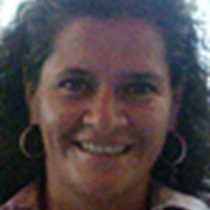Española Island
Hood Island, named by English pirates back in the 1700s, is now called Española. This island is 3.8 million years old, one of the oldest in the archipelago. In this long period of time several animal species had more time to evolve in the isolation of this particular environment, becoming endemics.
One of the differences with the marine iguanas that inhabit Española Island is the very attractive and distinctive green and red coloration that males display during the mating season; although it is still early in the mating season to observe such coloration.
Another endemic species of this island is the Española mockingbird. The latter is one of the four species of mockingbirds found in the Galápagos. These are the species that drew Charles Darwin’s attention back in 1835 when he visited the archipelago. As he collected them, Darwin was able to notice the physical differences they had. Darwin realized as well that something curious was going on in this place. Some species, like these mockingbirds, were closely related but did not look the same, despite the fact that they were not that far from each other. Darwin wrote ”there is a difference between the inhabitants of the different islands.”
As we walked on the trails we had a chance to see the entire breeding cycle of the waved albatross: couples courting, couples making a nest, couples preening each other, parents incubating eggs and finally, parents protecting new chicks. I have the impression that they are wise creatures, for the albatross seemed to give us some of that wise spirit as we admired their beautiful colors and their behavior.
Blue-footed boobies were favorites of the afternoon as well. We observed them nesting right in the middle of the trail; some boobies had chicks that probably were just hours or a few days old. These chicks had not even developed their downy coats yet. What an incredible afternoon we had! Experiences like we had today make the Galápagos an enchanted archipelago; nowhere else but here does nature give us the opportunity to witness these early processes of life taking place right in front of our eyes.
As we get back on board we realized that these fragile pristine ecosystems need to be conserved in time, not only for us but especially for our future generations and for the animal inhabitants that own and have the right to keep this place as pristine it is.




